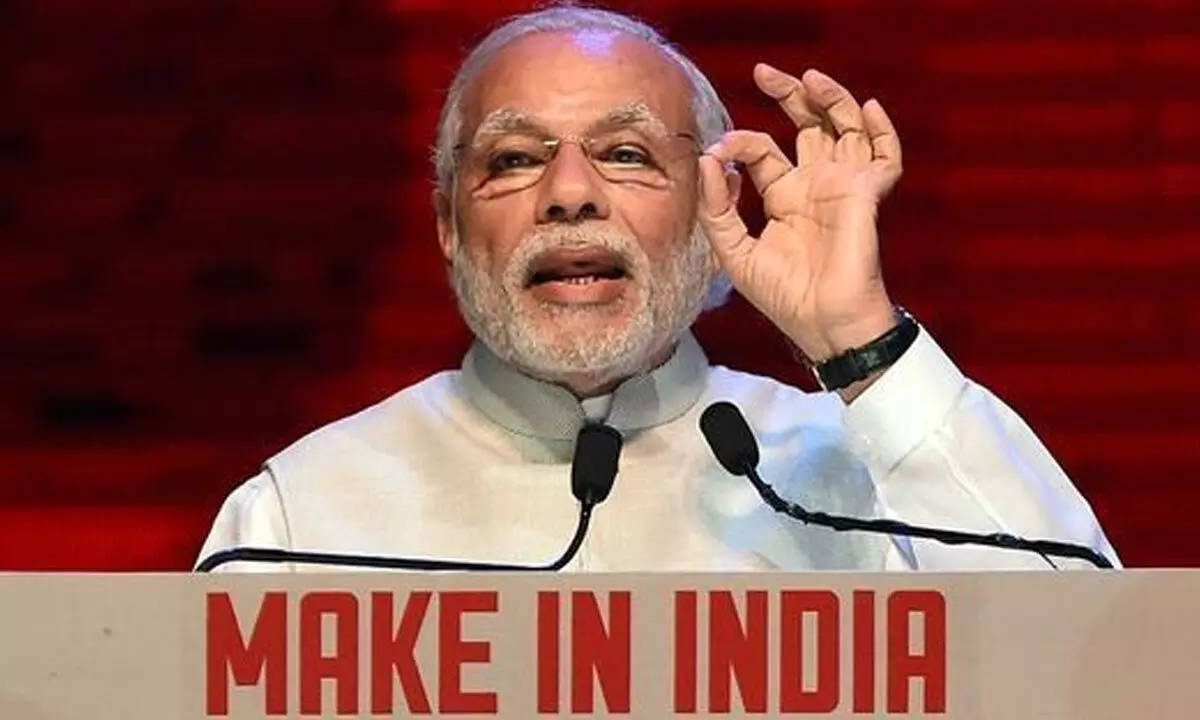'Make in India' has failed to yield desired results
‘Make in India’ had an ambitious launch by Prime Minister Narendra Modi on September 25, 2014 to propel the annual growth rate of the country’s manufacturing sector to 12-14 per cent by encouraging both domestic and multinational players.
image for illustrative purpose

'Make in India' had an ambitious launch by Prime Minister Narendra Modi on September 25, 2014 to propel the annual growth rate of the country's manufacturing sector to 12-14 per cent by encouraging both domestic and multinational players.
As far as the scope of 'Make in India' is concerned, it was devised to increase job opportunities and skill development. Modi's policy intends to substitute import of manufactured products with domestic production. The main focus on manufacturing has made policy makers to consider the best way forward for developing rural and agrarian economies. It is with foreign investments that there were projections of an increased contribution by the manufacturing sector to GDP by 25 per cent till 2025 besides developing infrastructure.
Although there have been modest achievements here and there, the expected objectives have not been met given the rather exaggerated goals that were set. It has been such a setback that the share of manufacturing fell to 14 per cent from the 15 per cent it enjoyed in 2014.
'Make in India' has mustered some achievements since its launch, but it has been a complete failure when it comes to 2019-2020. Achievements include FDP growth in aviation and chemicals. Investments by companies like Mercedes, Tata Motors and Suzuki motors in the automobile sector showed signs of progress. Many programs, constructions and developments were launched. However, the main manufacturing objective has fallen short of Modi's expectations. There is a loss in gross domestic products, inconsistency in policy focus and there has been no direct investment. The possible reason for such failures is that the lofty aspirations were without taking a pragmatic view of the country's infrastructure levels and skill of workers.
Rather than adding 100 million manufacturing jobs, India reported loss of 24 million jobs between 2016-17 and 2020-21, according to a recent analysis by Ashoka University's Centre for Economic Data and Analysis. Covid-19 was only the last straw: 11 million jobs had lost their jobs before the pandemic.
To summarise, 'Make in India' has failed to achieve any of its stated goals. Rather, every indicator has worsened, be it the share of manufacturing in the economy or the number of jobs generated in manufacturing. The pandemic is no excuse as it only accelerated a slide that was prevalent for several years. This might explain why the government's rhetoric has shifted to Atmanirbhar Bharat, or self
Make In India. This has apparently been initiated for the sole purpose of inviting various commercial sectors from all over the world, to engineer their products in India and sell them wherever they wished.
With 'Make in India', the country India has the potential to become a strong connection to the global manufacturing chain. To bring structural change in the economy, India has to transition from manufacturing low value-added products to high value added products. The Union Government must initiate efforts to make the manufacturing sector competitive vis-à-vis Chinese companies by enabling them to compete on the price front to reap economies of scale. Indian goods can be made more competitive through appropriate pricing of energy and transport.

